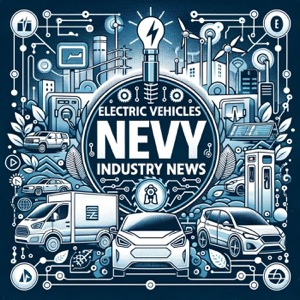EV Industry Surges in Early 2025 Amid Record Sales, Affordability, and Charging Expansion
Electric Vehicles Industry News - A podcast by Quiet. Please

The electric vehicle industry continues to show strong momentum in early 2025, with several notable developments over the past 48 hours. New data reveals that EV sales reached record highs for February, increasing 10.5% year-over-year despite a slight dip in overall market share to 7.7%. Luxury brands like BMW and Rivian saw particularly impressive growth of 20.9% and 34.0% respectively.Tesla maintains its position as market leader, though its sales declined 10% overall. The Model Y and Model 3 remain the top two best-selling EVs. Ford's Mustang Mach-E, the Honda Prologue, and Rivian's R1S round out the top five.On the used EV front, sales surged 34.2% compared to last year, with Tesla dominating at nearly 40% market share. Supply of used EVs has tightened, with days' supply down 21.5% year-over-year to 49 days.Pricing trends show EVs becoming more affordable. The average new EV transaction price fell 1.2% month-over-month to $55,273. Notably, incentives reached 14.9% of the average transaction price, significantly higher than the 7.1% seen in the broader auto market. For used EVs, 39% sold for under $25,000.The U.S. now boasts over 51,000 DC fast charger ports, double the number available in mid-2022. Tesla's Supercharger network comprises 56% of these chargers and has opened access to other major automakers.In corporate news, Rivian announced a spin-off focused on small, lightweight EVs called Also Inc. The startup received $105 million in funding from Eclipse Ventures. This move aligns with broader industry trends towards more diverse EV offerings.Regulatory shifts are also impacting the market. The Trump administration is moving to phase out federal EV incentives, potentially affecting future affordability. However, many automakers are offering aggressive financing deals, with several models available at 0% APR for up to 72 months.Overall, the EV industry shows resilience and continued growth despite challenges, with expanding options, improving infrastructure, and evolving pricing strategies driving adoption.
